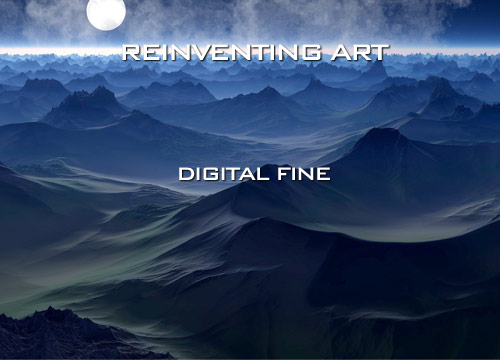written by Maurice Cardinal
Today, October 25, is the day we celebrate International Artist Day.
We chose this date back in 2004 because it’s Picasso’s birthday, the artist who brought cubism to our modern world of art and changed the contemporary landscape forever.
So … here’s a toast to Pablo, to change, and also to DATA Digitalism — our topic du jour.

2019 has been a year of mainstream integration of art and data.
2020, will be beyond words in this respect–where art should always be.
And yes, we’re talking about DATA not DADA, although there are esoteric similarities. I’ve been geeking out on data for decades, ever since Napster and P2P kicked open the door, but this, is different. Digital Art Data took off this year, mostly in the underground when artists realized they could now easily protect their work online and market it globally using blockchain technology and cryptocurrencies. The real game-changer however, is the Distributed Web 3.0 – light years of improvement and a successor to the outdated and spindly HTTP.
We can now affordably and relatively easily do things with data and art we didn’t even dream of a few years ago.
Data changes everything … and how you manage it changes everything else.
There are very cool blockchain art galleries around the world developing technology that makes it easy to register, certify, and display art. A small handful at this point use automated processes that allow experimental artists to slip in safely to check out the new blockchain environment. It’s not what you think, but it does work for artists and galleries alike, although in different ways.
There are two camps, purists who groove solely on digital and what they create on their computers, and in a parallel world, experienced artists with traditional and digital skills who are quickly learning that analog is rapidly moving to a digital arena. It’s a perfect world for photographers, but foreign for most two dimension canvass and paper artists, although they also have a lot to gain.
When film disappeared there was an elite collection of loyal fine art shooters who hung on until companies quit making film – not a lot of film choices anymore. A few of us reluctantly slipped over to digital earlier when we realized our film catalogs were prohibitively expensive to digitize. It was a better economic move to buy a digital camera system. There were a number of fine art film photographers who absolutely refused to make the switch. They hung on for years. A few well known film-only shooters also slipped into retirement.
Well guess what? All those fine art negatives and transparencies are finding new interest with collectors and gaining rapidly in value at unprecedented levels.
The reason, film, for the most part is almost gone, and now at finite equilibrium spiraling to a natural state of scarcity, which is the magic elixir for all collectibles.
When only one exists, and everyone wants it, that’s scarcity at its finest.
Large format 8×10 inch sheet film is one of those “when one only exists” moments because inherently, if you were shooting fine art with a large format camera using film, you weren’t clicking off ten brackets like we do today with digital, and also shooting half a dozen different perspectives. At thirty to fifty dollars a sheet with processing and printing, you took your time and created images ala fine art Zen. Most photographers shooting large format were devoted artists. It would sometimes take me days to set up a single shot. The crispness, depth, and tone of those images screamed to be reproduced billboard-size museum quality. When a grain of sand prints as wide as your thumb, the other elements around it take on an otherworldly feel. I used to sell large archival prints because it’s where the value fell, but today the interest has shifted.
I had no idea I was sitting on resurrection until I put a few old fine art film pieces on blockchain to sell as limited edition posters. No one purchased the twelve dollar posters using ETH, at least not yet, but offers to buy the original film are interesting, and cause to rethink value in photographic elements other than prints of any size. The format now also has value.
Fine art is going digital on blockchain, but it’s not fine art like you know fine art.
It’s more like, a good time to dispense with the “fine” part and find new descriptors.
The term Fine Art is too reminiscent of secretive galleries manipulating prices based on opaque information, blurry relationships, and innuendo. It’s almost the exact opposite of transparency and immutability of blockchain, and instead the new provenance of “fine” art.
Blockchain is for all artists, and when painters figure out what musicians have known for a while, and what photographers are discovering today, it will be interesting to see what happens when more and more canvasses are digitized and offered as limited edition posters. Digital blockchain posters are affordable and good purchases for entry level collectors, while more experienced art buyers will benefit from the added visibility of the original canvasses promoted through limited edition blockchain posters.
Blockchain is a perfect tool to create a perfect storm of scarcity.